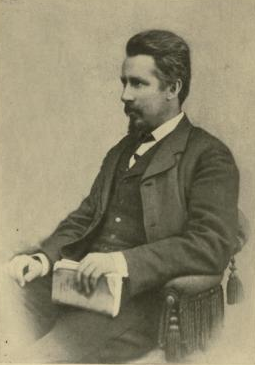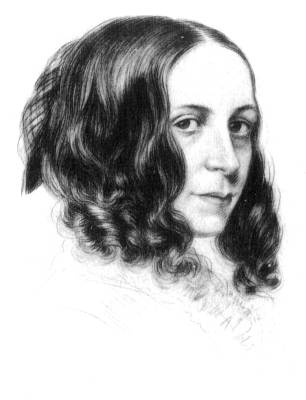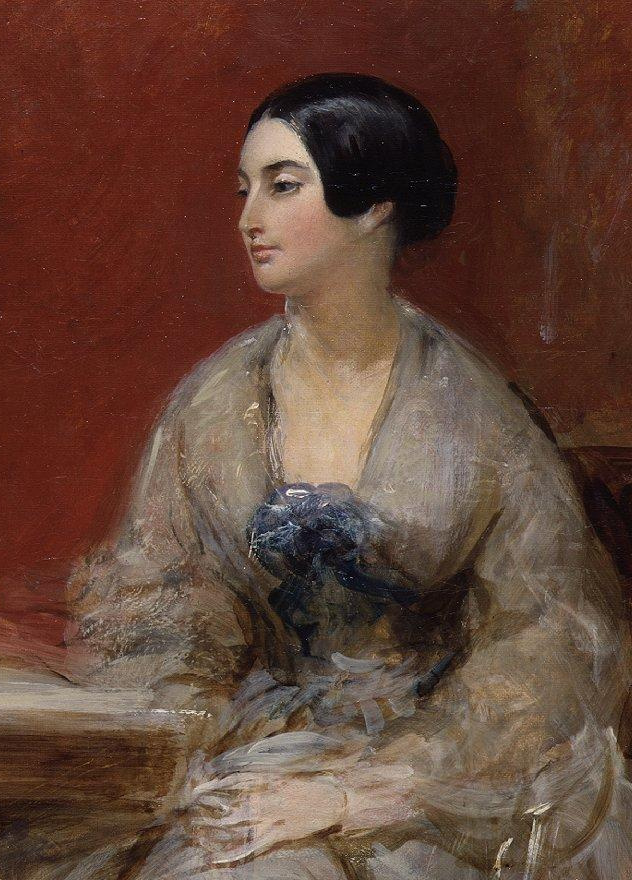|
Caroline Anne Southey
Caroline Anne Southey (née Bowles; 6 December 1786 – 20 July 1854) was an English poet and painter. She became the second wife of the poet Robert Southey, a prominent writer at the time. Background Born Caroline Anne Bowles on 6 December 1786 at Buckland Manor, near Lymington, she was the only child of Captain Charles Bowles (1737–1801), retired from the East India Company, and Anne Burrard (1753–1817), of a prominent local family. Her melancholic father moved the family to the much smaller Buckland Cottage when she was a child, but she spent her summers by the sea at Calshot Castle, home of a military uncle, Sir Harry Burrard. Her private education was mainly at the hands of the writer and artist William Gilpin (1724–1804), vicar of nearby Boldre, known for his introduction of the idea of the post- Enlightenment picturesque. She showed early artistic talent. Some of her surviving paintings are owned by Keswick School and held by the Wordsworth Trust. Penury and poetr ... [...More Info...] [...Related Items...] OR: [Wikipedia] [Google] [Baidu] |
Robert Southey
Robert Southey ( or ; 12 August 1774 – 21 March 1843) was an English poet of the Romantic school, and Poet Laureate from 1813 until his death. Like the other Lake Poets, William Wordsworth and Samuel Taylor Coleridge, Southey began as a radical but became steadily more conservative as he gained respect for Britain and its institutions. Other romantics such as Byron accused him of siding with the establishment for money and status. He is remembered especially for the poem "After Blenheim" and the original version of "Goldilocks and the Three Bears". Life Robert Southey was born in Wine Street, Bristol, to Robert Southey and Margaret Hill. He was educated at Westminster School, London (where he was expelled for writing an article in ''The Flagellant'', a magazine he originated,Margaret Drabble ed: ''The Oxford Companion to English Literature'' (6th edition, Oxford, 2000), pp 953-4. attributing the invention of flogging to the Devil), and at Balliol College, Oxford. Southey ... [...More Info...] [...Related Items...] OR: [Wikipedia] [Google] [Baidu] |
Tilbury (carriage)
A tilbury is a light, open, two-wheeled carriage, with or without a top, developed in the early 19th century by the London firm of Tilbury, coachbuilders in Mount StreetAt South Street, London in about 1820 according to Walrond, Sally: Looking at Carriages, p. 73. Pelham Books, London 1980 (see also Stanhope (carriage)). A tilbury rig is little more than a single "tilbury seat"—the firm's characteristic spindle-backed seat with a curved padded backrest— mounted over a raked luggage boot, and fitted with a dashboard and mounting peg, all on an elaborate suspension system of curved leaf springs above the single axle. The tilbury has large wheels for moving fast over rough roads. A tilbury is fast, light, sporty and dangerous: :"A bad accident happened yesterday afternoon to M. Adolphe Fould, son of the Minister. He was seized with giddiness while driving his tilbury in the Champs Elysees and fell out of the vehicle. He was taken up senseless and conveyed to the Palace o ... [...More Info...] [...Related Items...] OR: [Wikipedia] [Google] [Baidu] |
People From Lymington
A person ( : people) is a being that has certain capacities or attributes such as reason, morality, consciousness or self-consciousness, and being a part of a culturally established form of social relations such as kinship, ownership of property, or legal responsibility. The defining features of personhood and, consequently, what makes a person count as a person, differ widely among cultures and contexts. In addition to the question of personhood, of what makes a being count as a person to begin with, there are further questions about personal identity and self: both about what makes any particular person that particular person instead of another, and about what makes a person at one time the same person as they were or will be at another time despite any intervening changes. The plural form "people" is often used to refer to an entire nation or ethnic group (as in "a people"), and this was the original meaning of the word; it subsequently acquired its use as a plural form of per ... [...More Info...] [...Related Items...] OR: [Wikipedia] [Google] [Baidu] |
1854 Deaths
Events January–March * January 4 – The McDonald Islands are discovered by Captain William McDonald aboard the ''Samarang''. * January 6 – The fictional detective Sherlock Holmes is perhaps born. * January 9 – The Teutonia Männerchor in Pittsburgh, U.S.A. is founded to promote German culture. * January 20 – The North Carolina General Assembly in the United States charters the Atlantic and North Carolina Railroad, to run from Goldsboro through New Bern, to the newly created seaport of Morehead City, near Beaufort. * January 21 – The iron clipper runs aground off the east coast of Ireland, on her maiden voyage out of Liverpool, bound for Australia, with the loss of at least 300 out of 650 on board. * February 11 – Major streets are lit by coal gas for the first time by the San Francisco Gas Company; 86 such lamps are turned on this evening in San Francisco, California. * February 13 – Mexican troops force William Walker ... [...More Info...] [...Related Items...] OR: [Wikipedia] [Google] [Baidu] |
1786 Births
Events January–March * January 3 – The third Treaty of Hopewell is signed, between the United States and the Choctaw. * January 6 – The outward bound East Indiaman '' Halsewell'' is wrecked on the south coast of England in a storm, with only 74 of more than 240 on board surviving. * February 2 – In a speech before The Asiatic Society in Calcutta, Sir William Jones notes the formal resemblances between Latin, Greek, and Sanskrit, laying the foundation for comparative linguistics and Indo-European studies. * March 1 – The Ohio Company of Associates is organized by five businessmen at a meeting at the Bunch-of-Grapes Tavern in Boston, to purchase land from the United States government to form settlements in what is now the U.S. state of Ohio. * March 13 – Construction begins in Dublin on the Four Courts Building, with the first stone laid down by the United Kingdom's Viceroy for Ireland, the Duke of Rutland. April–June * Apri ... [...More Info...] [...Related Items...] OR: [Wikipedia] [Google] [Baidu] |
Edward Dowden
Edward Dowden (3 May 18434 April 1913) was an Irish critic, professor, and poet. Biography He was the son of John Wheeler Dowden, a merchant and landowner, and was born at Cork, three years after his brother John, who became Bishop of Edinburgh in 1886. Edward's literary tastes emerged early, in a series of essays written at the age of twelve. His home education continued at Queen's College, Cork and at Trinity College, Dublin. He contributed to the literary magazine ''Kottabos.'' He had a distinguished career, becoming president of the Philosophical Society, and won the vice-chancellor's prize for English verse and prose, and the first senior moderatorship in ethics and logic. In 1867 he was elected professor of oratory and English literature in Dublin University. Dowden's first book, ''Shakspere: A Critical Study of His Mind and Art'' (1875),Dowden 1875, ''Shakspere: A Critical Study of His Mind and Art'': Online editionin HathiTrust Digital Library. resulted from a revis ... [...More Info...] [...Related Items...] OR: [Wikipedia] [Google] [Baidu] |
George Cruikshank
George Cruikshank (27 September 1792 – 1 February 1878) was a British caricaturist and book illustrator, praised as the "modern Hogarth" during his life. His book illustrations for his friend Charles Dickens, and many other authors, reached an international audience. Early life Cruikshank was born in London. His father, Edinburgh-born Isaac Cruikshank, was one of the leading caricaturists of the late 1790s and Cruikshank started his career as his father's apprentice and assistant. His older brother, Isaac Robert, also followed in the family business as a caricaturist and illustrator. Cruikshank's early work was caricature; but in 1823, at the age of 31, he started to focus on book illustration. He illustrated the first, 1823 English translation (by Edgar Taylor and David Jardine) of ''Grimms' Fairy Tales'', published in two volumes as ''German Popular Stories''. On 16 October 1827, he married Mary Ann Walker (1807–1849). Two years after her death, on 7 March 1851, he m ... [...More Info...] [...Related Items...] OR: [Wikipedia] [Google] [Baidu] |
JSTOR
JSTOR (; short for ''Journal Storage'') is a digital library founded in 1995 in New York City. Originally containing digitized back issues of academic journals, it now encompasses books and other primary sources as well as current issues of journals in the humanities and social sciences. It provides full-text searches of almost 2,000 journals. , more than 8,000 institutions in more than 160 countries had access to JSTOR. Most access is by subscription but some of the site is public domain, and open access content is available free of charge. JSTOR's revenue was $86 million in 2015. History William G. Bowen, president of Princeton University from 1972 to 1988, founded JSTOR in 1994. JSTOR was originally conceived as a solution to one of the problems faced by libraries, especially research and university libraries, due to the increasing number of academic journals in existence. Most libraries found it prohibitively expensive in terms of cost and space to maintain a comprehen ... [...More Info...] [...Related Items...] OR: [Wikipedia] [Google] [Baidu] |
The Musical Times
''The Musical Times'' is an academic journal of classical music edited and produced in the United Kingdom and currently the oldest such journal still being published in the country. It was originally created by Joseph Mainzer in 1842 as ''Mainzer's Musical Times and Singing Circular'', but in 1844 he sold it to Joseph Alfred Novello (who also founded ''The Musical World'' in 1836), and it was published monthly by the Novello and Co. (also owned by Alfred Novello at the time).. It first appeared as ''The Musical Times and Singing Class Circular'', a name which was retained until 1903. From the very beginning, every issue - initially just eight pages - contained a simple piece of choral music (alternating secular and sacred), which choral society members subscribed to collectively for the sake of the music. Its title was shortened to its present name from January 1904. Even during World War II it continued to be published regularly, making it the world's oldest continuously publ ... [...More Info...] [...Related Items...] OR: [Wikipedia] [Google] [Baidu] |
Grace Williams
Grace Mary Williams (19 February 1906 – 10 February 1977) was a Welsh composer, generally regarded as Wales's most notable female composer, and the first British woman to score a feature film. Early life Williams was born in Barry, Glamorgan, the daughter of William Matthews Williams and Rose Emily Richards Williams. Both of her parents were teachers; her father was also a noted musician. She learned piano and violin as a girl, playing piano trios with her father and her brother Glyn, and accompanying her father's choir. At the County School she began to develop her interest in composition under the guidance of the music teacher Miss Rhyda Jones, and in 1923 she won the Morfydd Owen scholarship to Cardiff University (University College of South Wales and Monmouthshire), where she studied under Professor David Evans. In 1926 she began studying at the Royal College of Music, London, where she was taught by Gordon Jacob and Ralph Vaughan Williams. Other notable female comp ... [...More Info...] [...Related Items...] OR: [Wikipedia] [Google] [Baidu] |
Elizabeth Barrett Browning
Elizabeth Barrett Browning (née Moulton-Barrett; 6 March 1806 – 29 June 1861) was an English poet of the Victorian era, popular in Britain and the United States during her lifetime. Born in County Durham, the eldest of 12 children, Elizabeth Barrett wrote poetry from the age of eleven. Her mother's collection of her poems forms one of the largest extant collections of juvenilia by any English writer. At 15, she became ill, suffering intense head and spinal pain for the rest of her life. Later in life, she also developed lung problems, possibly tuberculosis. She took laudanum for the pain from an early age, which is likely to have contributed to her frail health. In the 1840s, Elizabeth was introduced to literary society through her distant cousin and patron John Kenyon. Her first adult collection of poems was published in 1838, and she wrote prolifically between 1841 and 1844, producing poetry, translation, and prose. She campaigned for the abolition of slavery, and her w ... [...More Info...] [...Related Items...] OR: [Wikipedia] [Google] [Baidu] |
Caroline Norton
Caroline Elizabeth Sarah Norton, Lady Stirling-Maxwell (22 March 1808 – 15 June 1877) was an active English social reformer and author.Perkin, pp. 26–28. She left her husband in 1836, who sued her close friend Lord Melbourne, then the Whig Prime Minister, for criminal conversation (adultery). The jury threw out the claim, but she failed to gain a divorce and was denied access to her three sons. Norton's campaigning led to the passage of the Custody of Infants Act 1839, the Matrimonial Causes Act 1857 and the Married Women's Property Act 1870. She modelled for the fresco of ''Justice'' in the House of Lords by Daniel Maclise, who chose her as a famous victim of injustice. Youth and marriage Caroline Norton was born in London to Thomas Sheridan and the novelist Caroline Henrietta Callander. Her father was an actor, soldier and colonial administrator, the son of the prominent Irish playwright and Whig statesman Richard Brinsley Sheridan and his wife Elizabeth Ann Linley.Str ... [...More Info...] [...Related Items...] OR: [Wikipedia] [Google] [Baidu] |
_1938.jpg)




